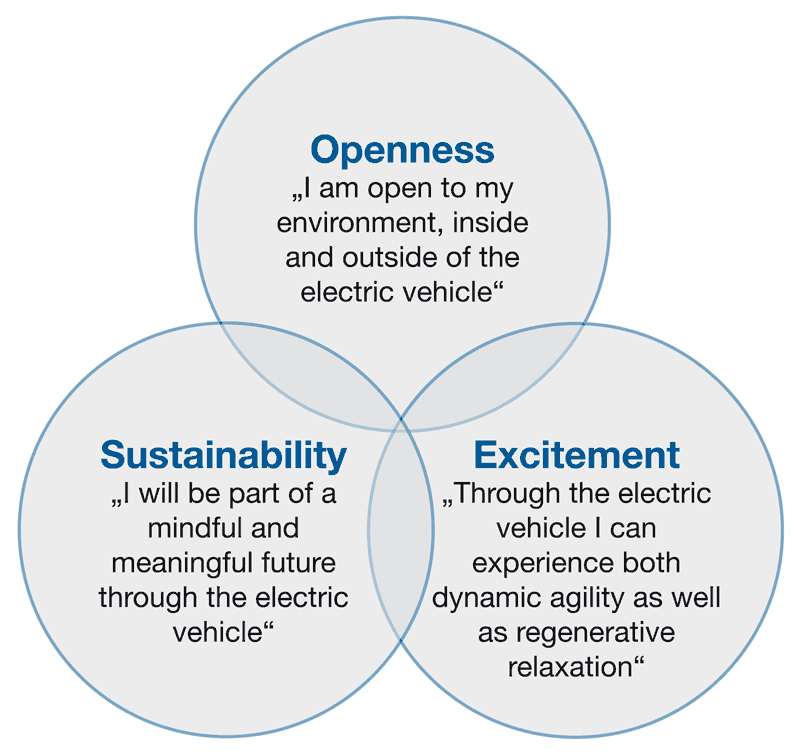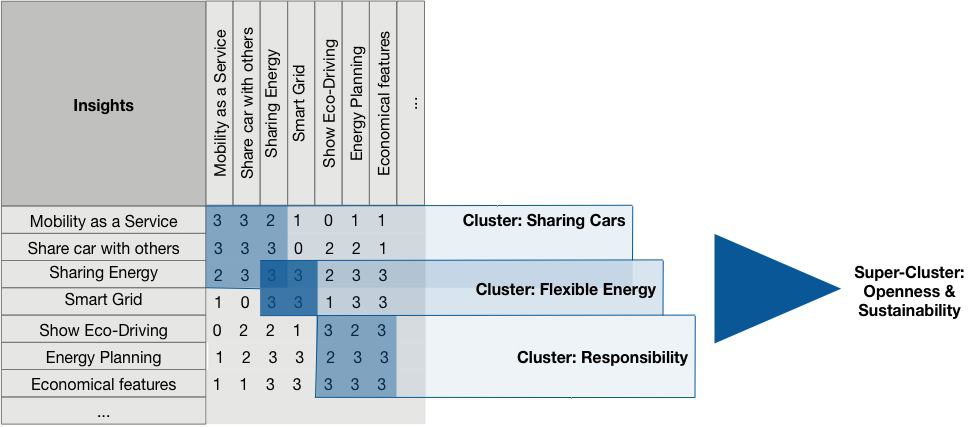Create a Framework.
Collect, cluster and combine the identified opportunities into a framework.
Why.
Create a structure that represents the quantity of the collected data and the derived opportunities.
What.
Carry out an analysis and clustering with the help of the insights and user motives to the specific topics identified in studies, interviews and technical literature.
How.
Opportunities, Car Persona, Brand Image, Motives.
First, compile all collected opportunities into a matrix in order to find possible groups or clusters that belong together.
Now compare all opportunities and assign scores to similarities on a scale of 0 (very different) to 3 (very similar).
Extract clusters from the matrix that combine several opportunities which can then be combined again to super clusters, if needed.
Bundle the most relevant and promising opportunity clusters into a framework. The framework forms the combined basic structure and thus the actual starting point for the experience stories still to be developed; all impulses and ideas originate from these clusters. Return all of the stories resulting therefrom to the framework at a later time, which will contribute to a coherent overall experience.
Framework.
Insights
A concise and clear formulation of the framework helps to avoid misunderstandings in the communication and increases the chances to implement a holistic overall experience.
References
Kumar, Vijay (2013): 101 Design Methods. A Structured Approach for Driving Innovation in Your Organization. Hoboken, New Jersey: John Wiley & Sons, Inc.





